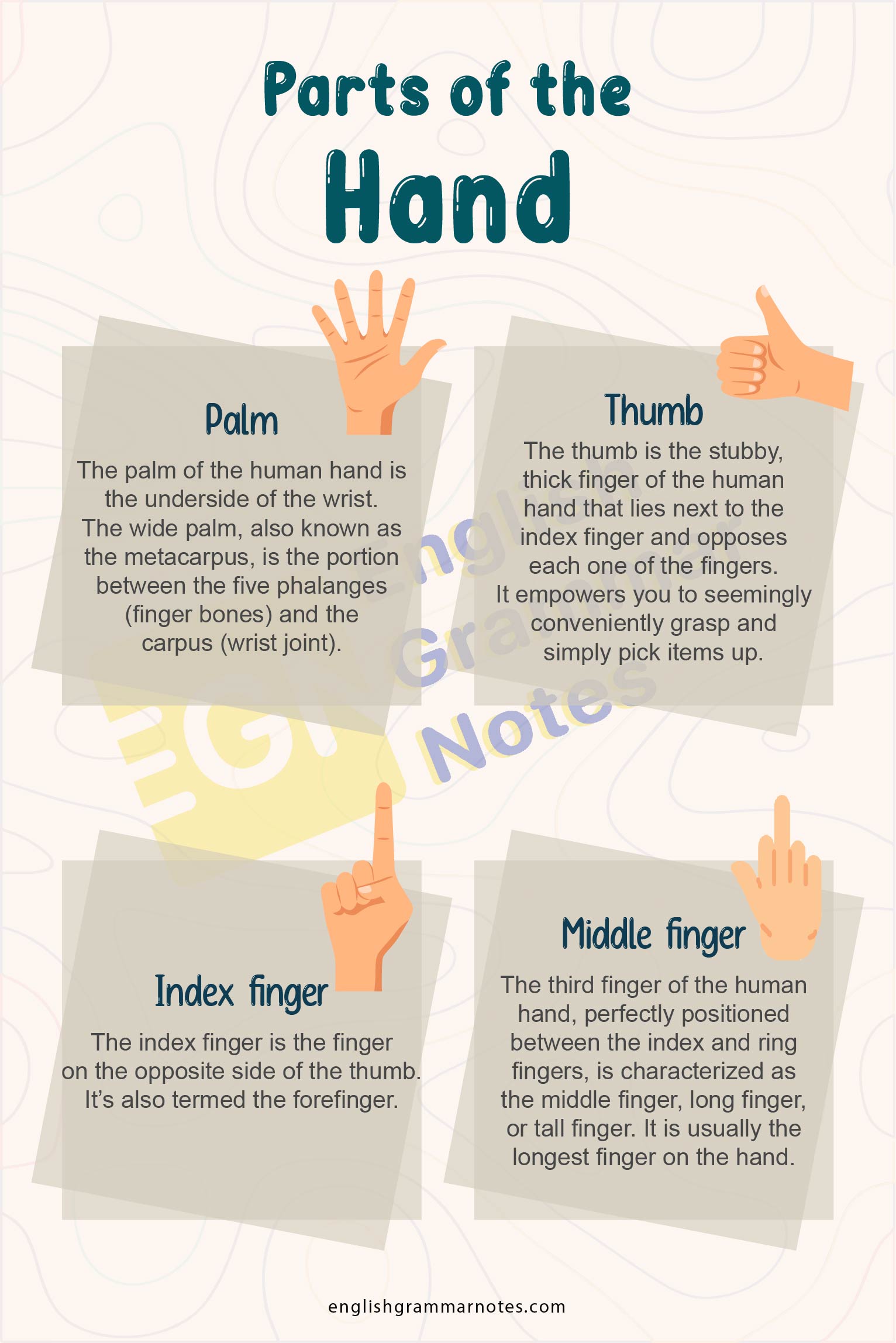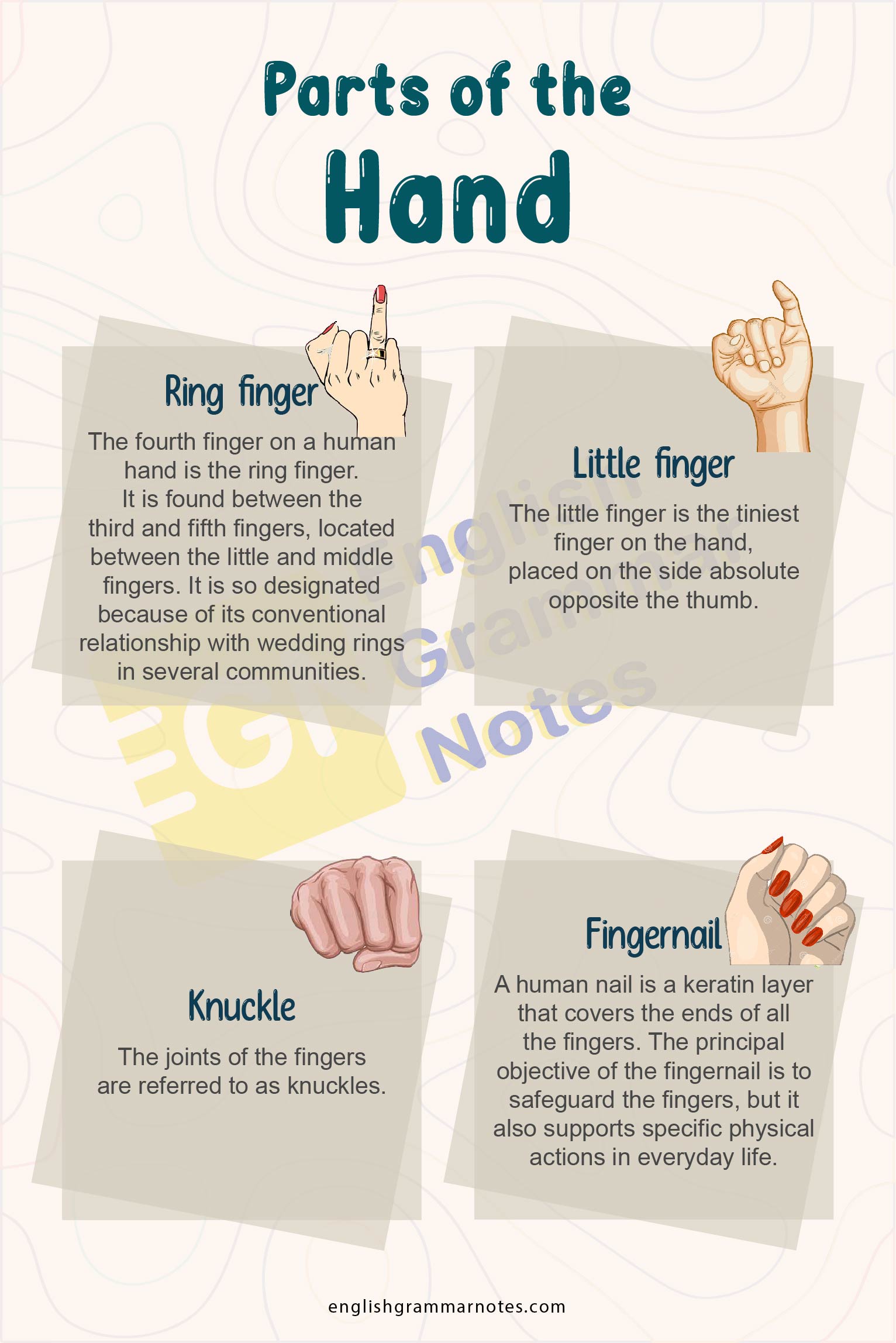Parts of the Hand Vocabulary: Hands have more bone fragments and functioning components than the bulk of other components of the body parts vocabulary list. These components all cooperate with each other while they’re functioning. They are responsible for a large number of operations. Hands perform everything from sensitive motions to strong feats.
Hence while learning the parts of the body vocabulary, being completely aware of various parts of the most important and frequently used part of your body is important. To make your learning easy, we have compiled a list of parts of the hand vocabulary for you.
Study the most important English Vocabulary Words identified by our experts and learn the right vocabulary to use in your day to day conversations
List of Parts of the Hand Vocabulary Words in English
Name of Parts of the Hand Vocabulary Words
Knowing the various parts of the most hard-working part of your body will give you an upper hand whenever you play the vocabulary game.
The hand is constructed up of a collection of bones, muscles, and ligaments that allow for a high degree of flexibility and mobility, and these parts add to the basic daily used vocabulary part of speech.
List of Parts of the Hand
- Thumb
- Index finger
- Middle finger
- Ring finger
- Little finger
- Palm
- Volar Plates
- Wrist
- Knuckle
- Phalanges
- Palmar Fascia
- Fingernail
- Carpals
- Metacarpals
Description of the Parts of the Hand Vocabulary Words
Thumb
The thumb is the stubby, thick finger of the human hand that lies next to the index finger and opposes each one of the fingers. It empowers you to seemingly conveniently grasp and simply pick items up.
Index finger
The index finger is the finger on the opposite side of the thumb. It’s also termed the forefinger.
Middle finger
The third finger of the human hand, perfectly positioned between the index and ring fingers, is characterized as the middle finger, long finger, or tall finger. It is usually the longest finger on the hand.

Ring finger
The fourth finger on a human hand is the ring finger. It is found between the third and fifth fingers, located between the little and middle fingers. Even though not all ethnicities designate this finger as the ring finger, it is so designated because of its conventional relationship with wedding rings in several communities.
Little finger
The little finger is the tiniest finger on the hand, placed on the side absolute opposite the thumb.
Palm
The palm of the human hand is the underside of the wrist. The wide palm, also known as the metacarpus, is the portion between the five phalanges (finger bones) and the carpus (wrist joint).
Volar Plates
The metacarpophalangeal (MCP) and interphalangeal (IP) joints in the human hand include palmar or volar plates that help strengthen the joint capsules, increase joint flexibility, and severely restrict hyperextension.
Wrist
The wrist is a complicated joint that joins the forearm to the hand and basically allows for a full range of motion. It is, nonetheless, susceptible to damage, specifically from repetitive motions.
Knuckle
The joints of the fingers are referred to as knuckles.
Phalanges
The finger bones are called phalanges.
Palmar Fascia
The palmar fascia is a layered structure of tissue that fully supports and stabilizes your hand’s palm.
Fingernail
A human nail is a keratin layer that covers the ends of all the fingers. The principal objective of the fingernail is to safeguard the fingers, but it also supports specific physical actions in everyday life.

Carpals
The wrist bones are known as carpals.
Metacarpals
The metacarpals are the bones situated in the central part of the hand.